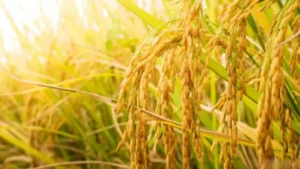Rubber, an indispensable commodity in various industries ranging from automotive to manufacturing, plays a pivotal role in global trade and economic development. As of 2024, several nations stand out as major contributors to the world’s rubber supply. Here’s a closer look at the top 10 rubber-producing countries shaping the market.
Worldwide Rubber Production
Rubber production holds immense importance globally, with numerous nations playing a significant role in meeting the world’s demand. Leading the pack is Thailand, renowned for its expansive rubber plantations and tropical weather. Following closely is Indonesia, capitalizing on its conducive environment for rubber cultivation. Vietnam has also risen as a notable contributor, experiencing notable expansion in production.
Largest Rubber Producer in the World 2024
Thailand leads the world as the largest producer of rubber, accounting for 36% of global production. Utilizing over 1.9 million hectares of land, Thailand’s warm and humid climate provides optimal conditions for cultivating rubber trees. The country celebrates “Rubber Day” annually on May 15th to honor its dedicated rubber farmers and promote the use of rubber products. With a history dating back to 1901, Thailand’s economy heavily relies on rubber, supported by government assistance, modern technology, and skilled workforce ensuring high-quality rubber that meets international standards.
Top-10 Rubber Producers in the World 2024
Thailand with the rubber production of 4,850,000 metric tons, stands as the largest rubber producer in the world, followed by Indonesia, Vietnam and India.
Here is the list of top-10 rubber producing countries in the world 2024:
| Top-10 Rubber Producing Countries in the World 2024 | ||
| Rank | Country | Rubber Production (in metric tons) |
| 1. | Thailand | 4,850,000 |
| 2. | Indonesia | 3,550,000 |
| 3. | Vietnam | 1,190,000 |
| 4. | India | 911,000 |
| 5. | China | 831,000 |
| 6. | Malaysia | 730,000 |
| 7. | Sri Lanka | 88,000 |
| 8. | Cote d’Ivoire | 77,000 |
| 9. | Philippines | 74,000 |
| 10. | Cameroon | 72,000 |
Largest Rubber Producer in the World – Thailand
Rubber Production: 4.850,000 metric tons
Thailand stands as the world’s largest rubber producer, contributing 36% of the global supply. Its economy heavily relies on rubber, utilizing over 1.9 million hectares of land for rubber tree cultivation. With a warm and humid climate conducive to growth, Thailand celebrates “Rubber Day” annually on May 15th to honor farmers and promote rubber product usage. Since its first plantation in 1901, rubber has been pivotal to Thailand’s economic landscape. Supported by government aid, modern technology, and skilled labor, Thailand ensures its rubber meets international standards, solidifying its reputation for quality production.
Second Largest Country in terms of Rubber Production – Indonesia
Rubber Production: 3,550,000 metric tons
Indonesia ranks as the second-largest producer of natural rubber globally, contributing approximately 8% to the total output. This essential commodity significantly drives Indonesia’s economy, providing employment to millions and generating substantial revenue. Benefiting from its warm, rainy climate and fertile soil, Indonesia boasts extensive rubber plantations spread across the country. With a steady annual growth rate of 3.5%, Indonesia primarily exports its rubber to major markets such as China, Japan, and the United States. Notable Indonesian companies like PT Bridgestone Tire Indonesia and PT Goodyear Indonesia play a significant role in the rubber industry, managing vast plantations covering over 3.4 million hectares.
World’s Third Largest Rubber Producing Country – Vietnam
Rubber Production: 1,190,000 metric tons
Vietnam ranks among the top three global producers of natural rubber, contributing around 7% to the world’s total output. With a history dating back to the late 1800s when French colonists introduced rubber trees, Vietnam’s rubber industry has become a cornerstone of its economy, providing employment to over 1.2 million individuals. Experiencing remarkable growth, Vietnam’s rubber production has surged by approximately 15% annually since 2000, utilizing over 940,000 hectares of land for cultivation. While Vietnam produces both natural and synthetic rubber, natural rubber accounts for about 80% of its output. The country predominantly exports its rubber to major markets like China, India, and Japan, further solidifying its position as a key player in the global rubber industry.




 What was the Old Name of Goa? Know About...
What was the Old Name of Goa? Know About...
 Top-10 Most Searched Words in 2025, Chec...
Top-10 Most Searched Words in 2025, Chec...
 Which Crop is known as the Backbone of I...
Which Crop is known as the Backbone of I...







